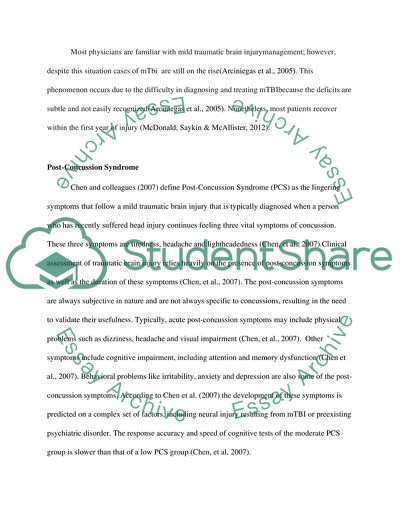Cite this document
(Traumatic Brain Injury and Its Treatment Plan Literature review Example | Topics and Well Written Essays - 4000 words, n.d.)
Traumatic Brain Injury and Its Treatment Plan Literature review Example | Topics and Well Written Essays - 4000 words. https://studentshare.org/health-sciences-medicine/1833382-exercise-intervention-to-treat-white-matter-loss-after-mtbi
Traumatic Brain Injury and Its Treatment Plan Literature review Example | Topics and Well Written Essays - 4000 words. https://studentshare.org/health-sciences-medicine/1833382-exercise-intervention-to-treat-white-matter-loss-after-mtbi
(Traumatic Brain Injury and Its Treatment Plan Literature Review Example | Topics and Well Written Essays - 4000 Words)
Traumatic Brain Injury and Its Treatment Plan Literature Review Example | Topics and Well Written Essays - 4000 Words. https://studentshare.org/health-sciences-medicine/1833382-exercise-intervention-to-treat-white-matter-loss-after-mtbi.
Traumatic Brain Injury and Its Treatment Plan Literature Review Example | Topics and Well Written Essays - 4000 Words. https://studentshare.org/health-sciences-medicine/1833382-exercise-intervention-to-treat-white-matter-loss-after-mtbi.
“Traumatic Brain Injury and Its Treatment Plan Literature Review Example | Topics and Well Written Essays - 4000 Words”. https://studentshare.org/health-sciences-medicine/1833382-exercise-intervention-to-treat-white-matter-loss-after-mtbi.


